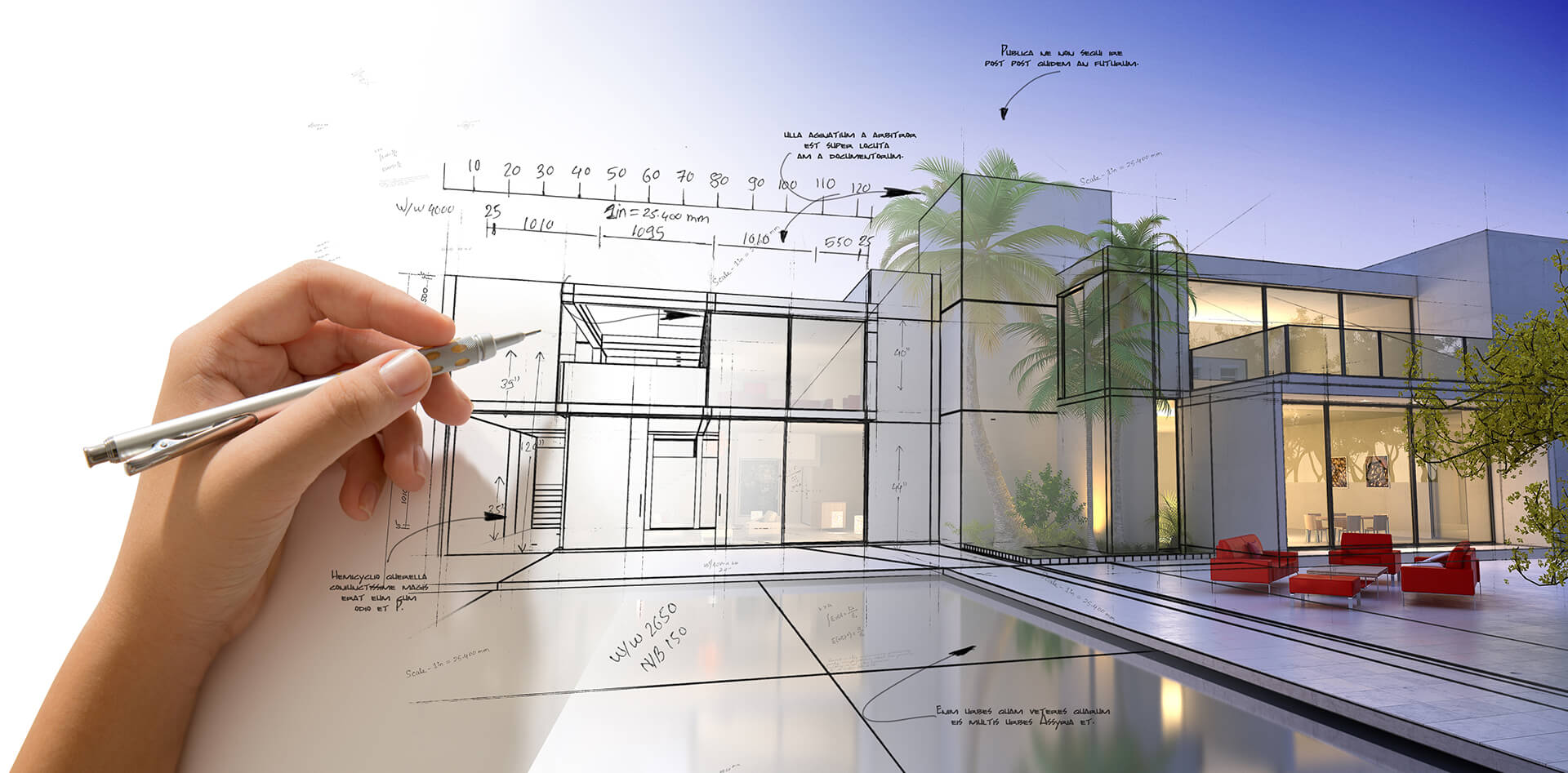Architectural CGI is a cutting-edge solution to an architect’s many professional challenges. First of all, it allows specialists to present their concepts to clients in great detail. Because photorealistic CG images can look practically indistinguishable from photos of real-life buildings. Then, 3D renders make a wonderful addition to online, digital, and printed architectural portfolios. And finally, CG visuals aid in all kinds of marketing activities, from advertising to featuring in specialized media outlets. But not every architecture professional can create photoreal 3D imagery themselves or hire an in-house team to do it. That’s why many consider outsourcing CGI services.
But starting new things often feels a little intimidating. And outsourcing 3D visualization services is no exception here. Naturally, architects might fear that this unfamiliar process could impede their work progress and even yield poor results. However, that’s absolutely not true. Those who work with one CGI company on a regular basis definitely know that. Once the architect finds a perfect fit, the workflow gets extremely easy. The familiar team of 3D artists knows all the requirements of their client, deadlines and prices are agreed upon, and the quality of visuals is consistently high.
But is there a way to have a successful project when working with an architectural visualization company for the very first time? Of course, there is! Read on to find out what the 5 ingredients for effective cooperation are.
#1. A Comprehensive Brief

Every architectural CGI project begins with a brief. A good one always contains detailed instructions and explanations. Also, it must include as many relevant references as possible. For instance, in the case of exterior visualization, a studio will need floorplans and elevations, sketches, BIM files if there are any, textures and materials samples, and lighting and mood references. And even though highly skilled CGI specialists can still deliver amazing 3D visuals without having a thing or two from the list, it’s definitely better to give them more information. This way, an architecture professional can get perfect results within the shortest time possible, with minimal revisions, and no extra fees.
#2. The 3D Artists’ Experience

The next ingredient in this recipe for a successful architectural CGI project is the experience of the 3D artists that work on it. Therefore, one shouldn’t hesitate to ask how long they’ve been working in the 3D rendering industry and what their particular field of expertise is. For instance, a CG expert can specialize in luxury villas or create mind-blowing skyscrapers. Normally, a studio’s client manager will be happy to answer questions about the 3D artists’ skills from a potential client.
The reason the experience is so important is that it doesn’t only determine the CGI specialists’ technical skills. It also shows in their ability to correctly follow the brief, their speed of work, professional versatility, and artistic capabilities. Moreover, experienced 3D artists can better understand their client’s requirements. That helps them recreate the exact mood and style that the client wants. So, to ensure a project’s success, an architect should always see that everyone on the team they’ll be working with has enough experience. Plus, checking out the CG experts’ previous works can be helpful as well.
#3. Powerful Hardware

Most professional studios use the same software for creating architectural CGI. Oftentimes, it’s 3Ds Max along with several plugins, such as Corona Renderer and V-Ray. However, the hardware is what makes a real difference here. The thing is, the process of 3D architectural visualization has two main stages. The first one is 3D modeling, which is done by a CGI specialist. The second one is 3D rendering, which is done by a computer. Basically, it’s when the 3D scene created by the CG artist is captured in photo-like 2D images.
Ensure your exterior design project leaves a lasting impression and takes your clients’ breath away with stunning visuals.
Now, that rendering process can take many hours to complete. And the one thing that can help speed it up is a render farm. It’s a chain of computers linked together to work on the same task at once. This way, the rendering of even the most complex architectural 3D visuals can be done overnight. So, before starting a CGI project, an architect should always check if the studio has a render farm. Because having one certainly contributes to their capacity to deliver results on time.
#4. A Well-Organized Workflow

Having all the state-of-the-art hardware, years of experience, and extremely detailed briefs means nothing if a 3D visualization studio’s workflow is poorly organized. This is why all the best architectural CGI companies use CRM systems. Those are digital platforms that combine chatrooms, progress tracking tools, cloud storage, and online payment instruments. This means that CRM systems allow architects to easily communicate with their project teams, submit and receive files, make and track payments, etc. All in one place!
Another important thing to do when outsourcing architectural visualization services is to agree on the most convenient time slots for communication. Because the architect and the CGI company might very well be located in different countries. In such cases, a professional studio makes sure to only communicate with the client at the latter’s preferred time. While specialists of a mediocre CGI firm might get in touch only when it suits them. That is why to have a successful project, the architect needs to learn about the studio’s workflow organization first.
#5. Active Involvement of the Client

With all the communication tools present and in order, the architecture professional must remember to stay involved. That means checking the messages in the CRM system, promptly replying to questions, and being available for revisions. Otherwise, the team will have to wait for a reply, and the work will stall. For instance, architectural CGI specialists might want to clarify something about the assignment or ask for extra references if the brief was incomplete. Or they might need more details to make the necessary corrections if the architect’s comments on drafts weren’t clear enough. Therefore, staying tuned in the agreed time slots is an absolute must for a successful project.
So, those were the 5 ingredients of the recipe for effective collaboration with an architectural CGI studio. As one can see, it’s actually possible to have a great experience outsourcing 3D visualization services from the very first project. Essentially, it all boils down to making a good brief, asking the studio the right questions before the work begins, and staying in touch during the process. An architecture professional just needs to follow those simple steps to make sure nothing gets in the way of creating top-notch 3D exterior visualizations for their presentation.
Showcase your architectural project like a true work of art, brought to life with cutting-edge AI-powered CGI technology.
Looking for 3D visualization services to nail your next pitch? Contact us at ArchiCGI and get the highest-quality CG images within just 1 week!

Ana Wayne
Content Writer, Copywriter
Ana is a content writer for ArchiCGI. She has a passion for design and architecture - and for talking about it. Outside of work, she is a fan of sci-fi movies and a street food connoisseur.



